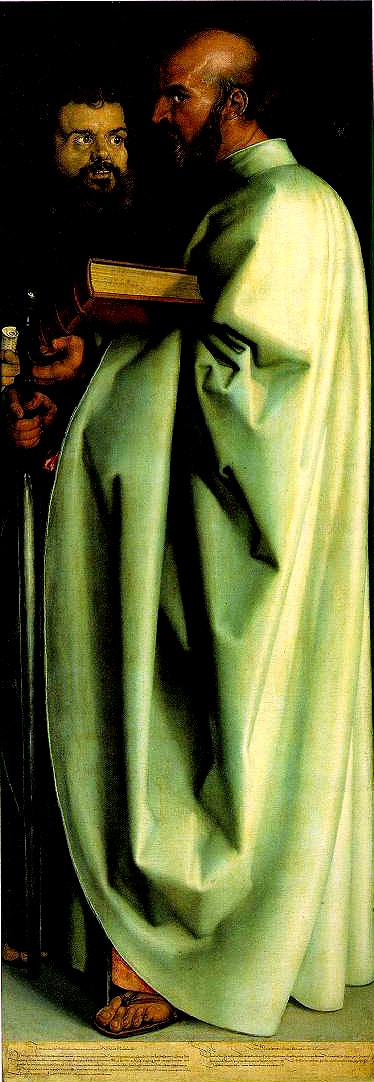|
St. Mark and St. Paul from Albrecht Durer's The Four Apostles, 1526. | |
 |
|
Presented to the city of Nuremberg, Durer wrote in his letter of dedication, as "a remembrance in respect for your wisdom" for adopting Lutheranism as its official creed, The Four Apostles was his last major painting. An inscription below the painting warns secular authorities to accept the Bible as the only source of truth: "All worldly rulers in these dangerous times should give good heed that they receive not human misguidance for the Word of God, for God will have nothing added to His Word nor taken away from it. Here therefore these four excellent men, Peter, John, Paul, and Mark and their warning." Beneath this admonition were verses from Luther's translation of the New Testament. (When the painting was moved from Protestant Nuremberg to Catholic Munich, the inscription was sawed off.) In this, the right panel of the painting, St. Paul in the foreground dominates the figure of St. Mark. To Luther, whom Durer revered, Paul was the "apostle of the reformation," the best teacher and wisest witness after Jesus, and Durer painted him as a stern, imposing, austere figure holding a sword--the sword of Faith from his Epistle to the Ephesians (6:17) and the instrument of his martyrdom--and staring forbiddingly at the viewer. |